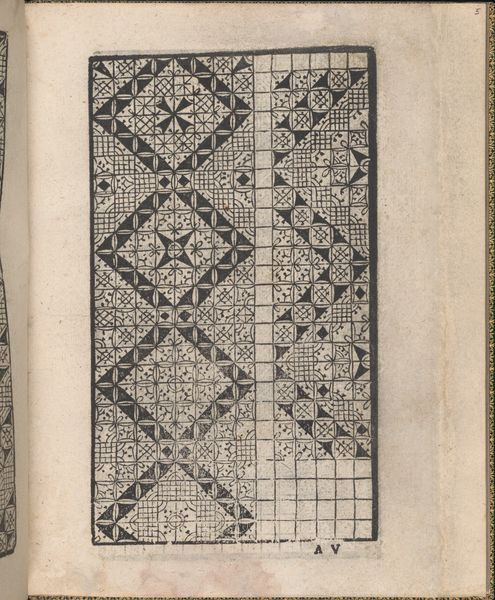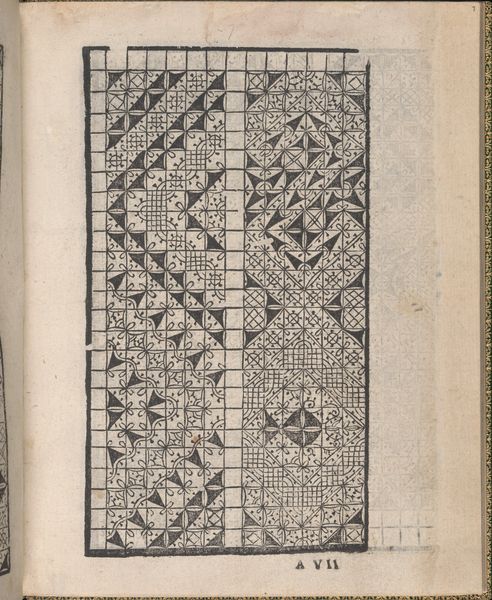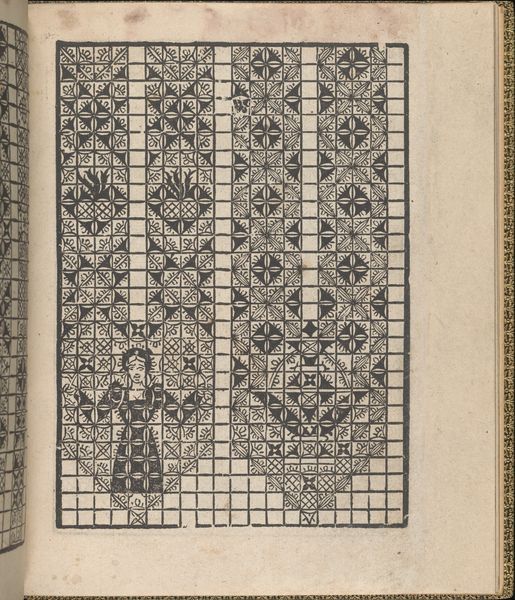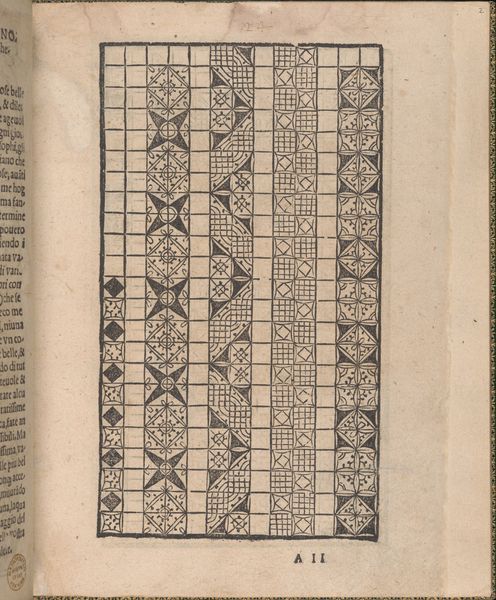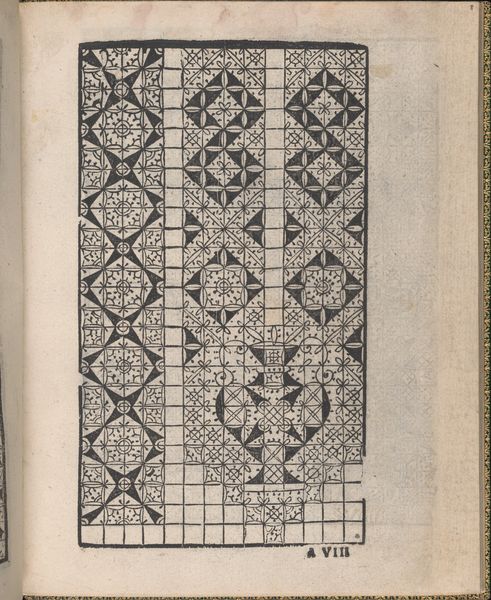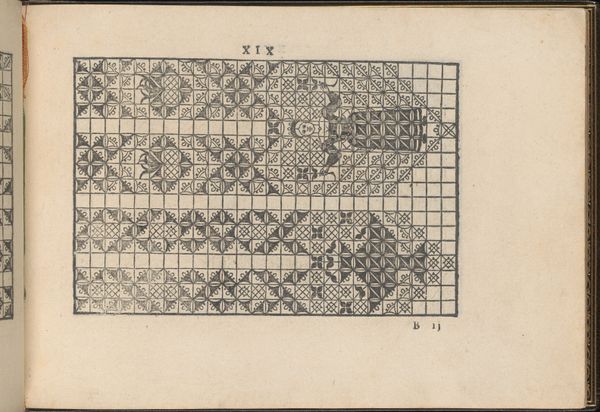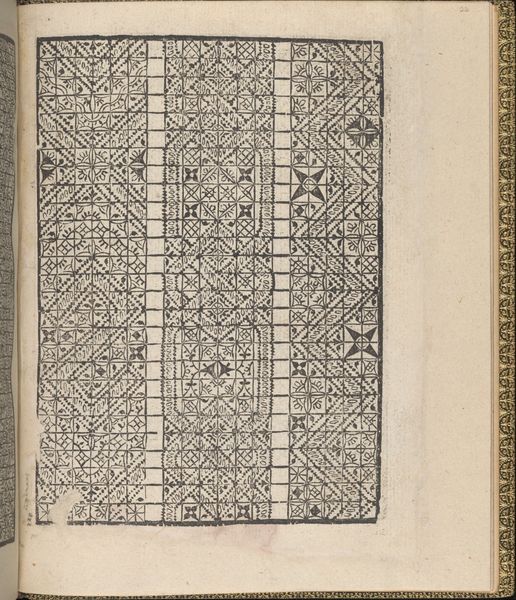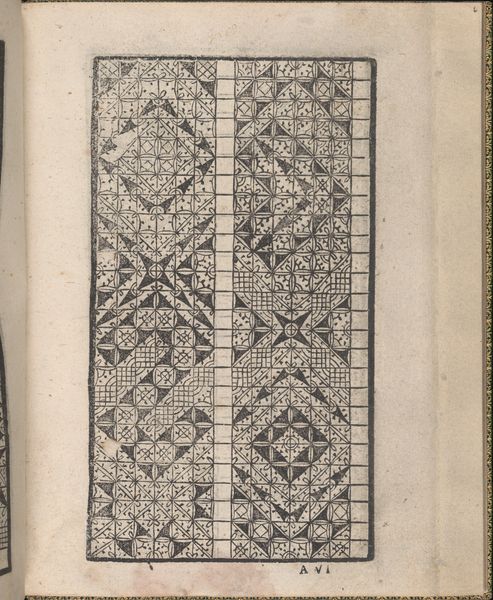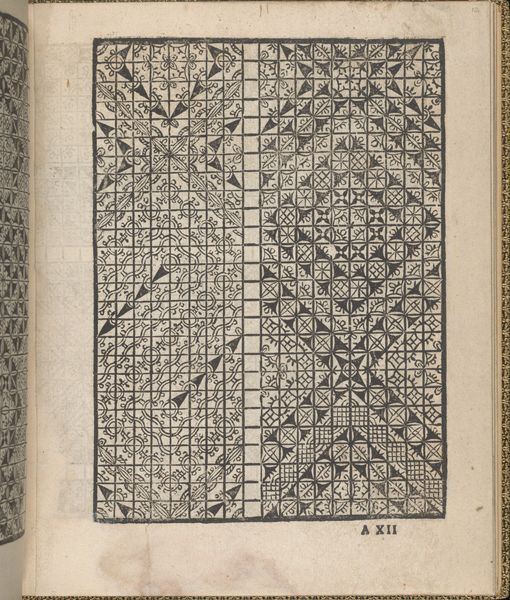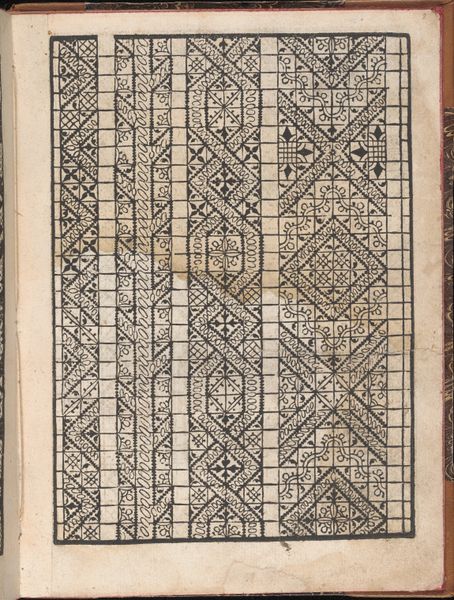
Ornamento delle belle & virtuose donne, page 3 (recto) 1554
0:00
0:00
drawing, graphic-art, print, etching, engraving
#
drawing
#
graphic-art
# print
#
etching
#
form
#
11_renaissance
#
geometric
#
geometric-abstraction
#
line
#
decorative-art
#
italian-renaissance
#
engraving
Dimensions: Overall: 7 1/2 x 5 7/8 in. (19 x 15 cm)
Copyright: Public Domain
Curator: This looks like a tiled maze, all sharp lines and repeating forms. Editor: Indeed. This is page 3 from "Ornamento delle belle & virtuose donne," a print made by Matteo Pagano in Venice in 1554. The title translates to "Ornament for beautiful and virtuous women". Curator: "Virtuous" hints at something, doesn't it? Given the book's context, it might speak to the very limited scope of activity considered appropriate for women. Perhaps this ornament is meant to decorate textiles produced within very strictures. Editor: Quite possibly. It's fascinating how this graphic work serves as both pattern and instruction. Pagano uses etching and engraving, affordable methods to circulate designs, creating an intimacy between the craftswoman and the visual culture. It shows how material constraints affected production methods. Curator: Precisely. And the rigid grid and geometric abstractions reinforce how constricted women's creative outlets would have been. While claiming to empower them, these ornament books largely promoted submission to patriarchal aesthetics. Editor: I do wonder about the handwork in printing, though. The etched line gives a different texture than cold metal type. Despite being reproducible, each page carries a record of human interaction. Curator: True, the printmaking process has that tactile dimension. But consider who got to control that labor, the means of production itself. Even in ornamentation, the social hierarchies of the Renaissance were reinforced. Editor: Absolutely. The beauty belies the underlying message of restriction. Still, I'm struck by how something made with basic tools can convey such layers of significance, how technique reveals social and gender relations of the time. Curator: So, perhaps Pagano's work functions as an ambiguous document, offering creative outlet on one level, while, on a deeper level, revealing social boundaries placed on female agency and creativity. Editor: Yes. It challenges the notion of "ornament" itself. I mean, who gets to determine what is decorative, and how are these forms tied to class and labor? I never thought about it that way.
Comments
No comments
Be the first to comment and join the conversation on the ultimate creative platform.
